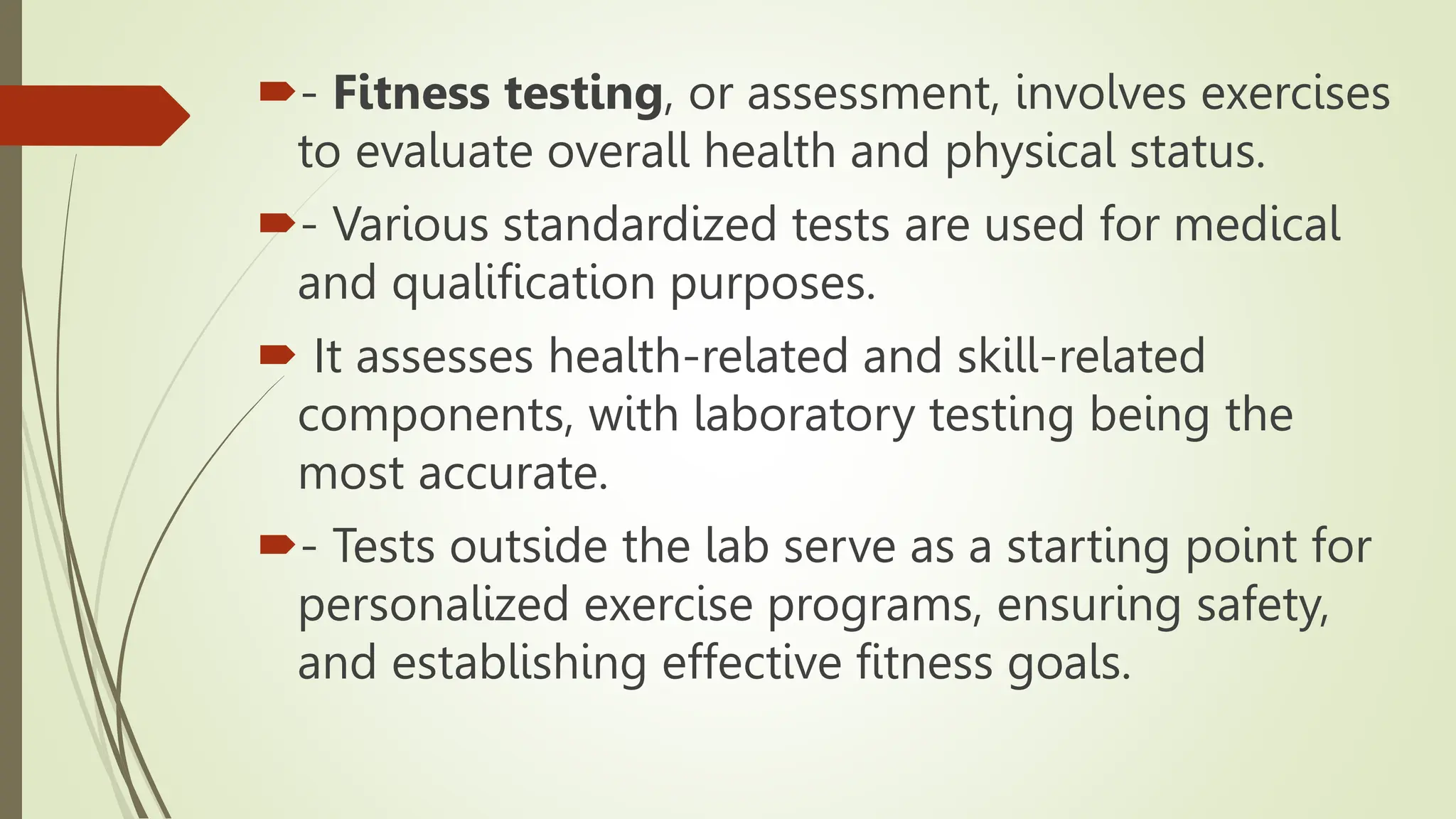Fitness testing assesses an individual's overall health and physical fitness through various standardized exercises. These tests identify health risks, evaluate performance, establish baselines, and can guide personalized workout programs. Major principles guiding fitness testing include specificity, validity, objectivity, and reliability to ensure accurate results.


















































